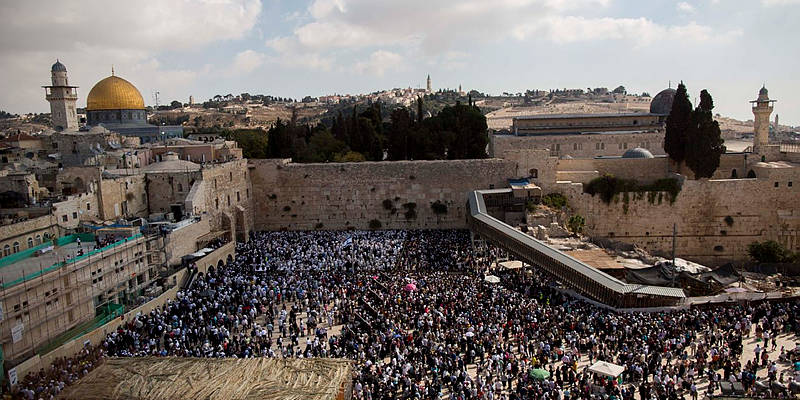During Chol Hamoed, the days between the first and last days of Passover, life in Israel takes a turn towards rest and relaxation during which Israelis take time to enjoy themselves with friends and family. The schools are closed and many workers are working reduced hours, if at all. Many Israelis who do have work select to take off regardless. As a result, the trains, buses, and roads are full of people touring the country. In Tel Aviv, the beaches are full of people, as well as the cafes along the city’s promenade. The famous Dizengoff Shopping Mall in Tel Aviv is also packed with people, taking advantage of the holiday to buy clothes, many of which were on sale for the holiday.
Many Israelis flock to Jerusalem for the holiday. There are reduced prices and special tours in many of Jerusalem’s museums. They offer reduced fairs for children and free admission for all during part of the holiday. The Ir David Archaeological Park, which highlights the original city of King David, is offering many special Passover tours as well.
Yet even more Israelis are expected to visit the ‘Kotel’, also known as the ‘Western Wall’, in Jerusalem, which is an outer retaining wall of the Beit HaMikdash, the Holy Temple, where Jews traditionally offered sacrifices to God, and which was destroyed almost 2,000 years ago (the Dome of the Rock was actually built to honor its site). This site has become the destination of Jewish pilgrims’s and the center of Jewish prayer for millennia. Crowds around the Kotel over Passover are so huge that one often is forced to squeeze ones way to the remnants of the ancient Jewish Temple in order to place a note into the Kotel. The shops within the Old City are just as busy.
Other Israelis are visiting Judea and Samaria over Passover. Certain locations within Judea and Samaria, which are usually closed, were open for Israeli visitors this holiday. Many Israelis have expressed an interest in traveling to Sebastia, the ancient seat of the Northern Kingdom, and Mount Ebal, where an alter to Joshua is located. Both sites are open specially for the holiday. Usually, Israelis cannot visit Sebastia except as part of a group in a bullet proof bus and Har Eivel is barely open at all. Thousands are expected to visit holy Jewish areas of Judea and Samaria that are not readily available during the rest of the year.
Hundreds of thousands of Israelis will visit national parks, forests and biking trails throughout Israel. Famous Mount Hermon in the Golan Heights is a popular favorite and often is still snow-capped during Passover. The Hotel Association of Israel reported that every hotel in the Galilee area was booked. Gamla, Nahal Amud, and Tel Afek were very popular destinations for Israelis.
Thousands of Israelis also visited locations within Southern Israel as well, such as Eilat, Masada, and Ein Geddi. Yet, hiking in national parks and having picnics in archeologically rich areas are not the only Israeli Passover pastime. Some Israelis also use the holiday in order to camp out and have a BBQ.










